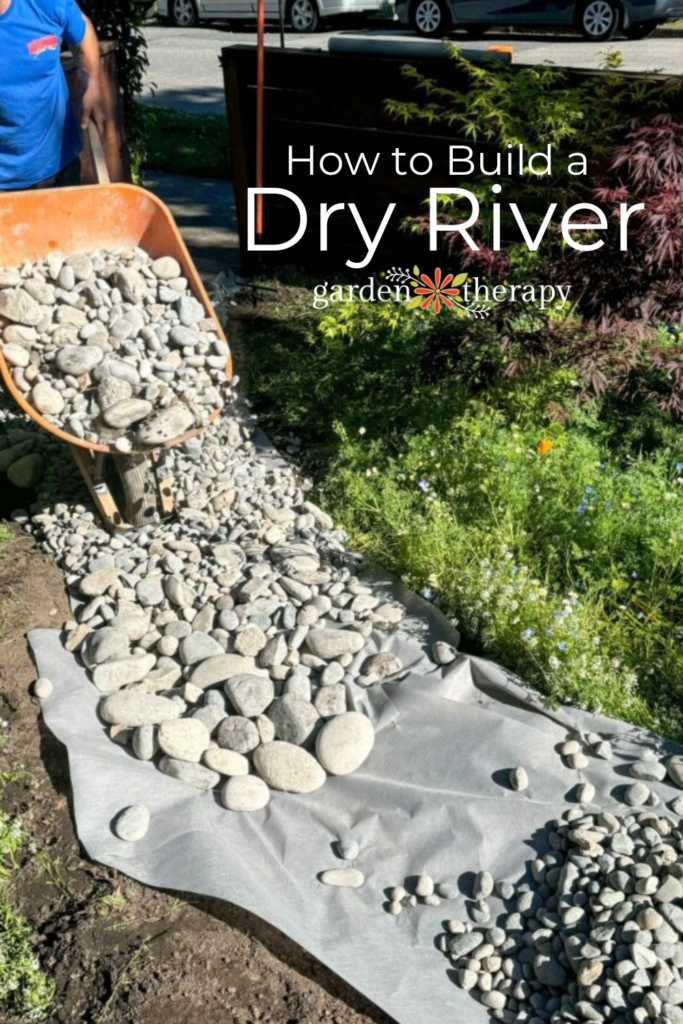At my new house, my front lawn was all mud and pools of uneven, soggy ground. Rather than put all that water into the city drains, I redirected it to filter through the soil and water the surrounding plants. Design your own dry river bed, and you just might make your own drainage problems disappear…poof!
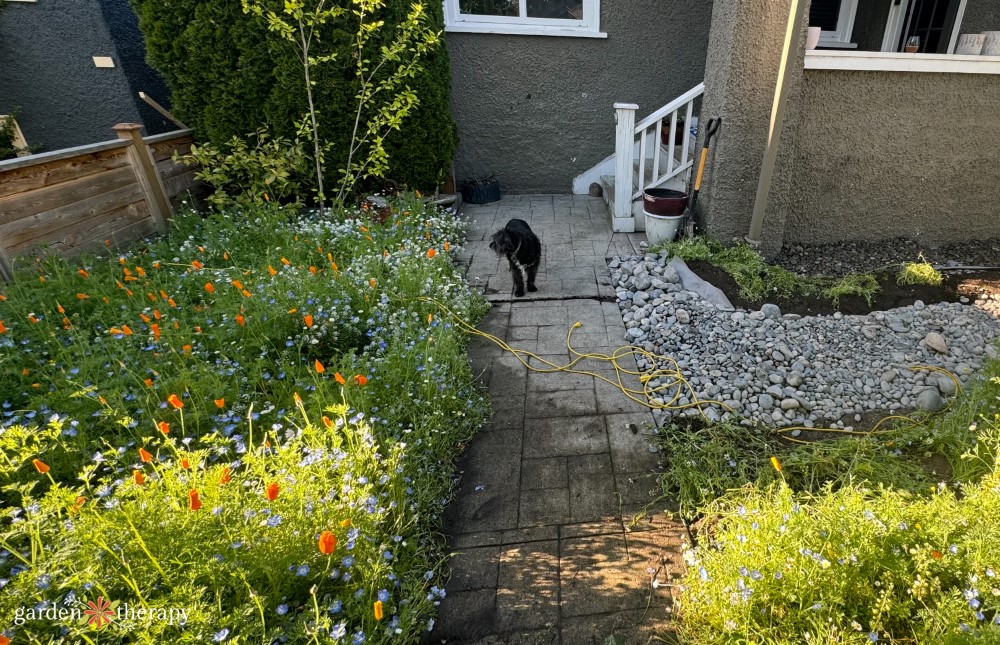
In my front yard, I planted a beautiful, meadow-like wildflower lawn. So far, it’s been the star of the block, as everyone stops and admires it.
For the wildflower lawn, I used the West Coast Seed Alternative Lawn Mix Wildflowers. I didn’t realize just how many wildflowers it would produce!
Because it has turf grasses, I thought there would be only a few flowers among the grass. I thought I would be able to mow it and use it like any other lawn.
But that hasn’t been the case at all. My expectations of the wildflower lawn were just blown out of the water.
While beautiful, and I wouldn’t change a thing, it meant that walking through our garden wasn’t going to be possible. To get to the backyard, we would go down the sidewalk, through a gate, down the street, and through another gate.
Complicated right?
I knew I needed a solution, and rather than build a simple pathway, I decided to solve another problem with my garden: the drainage.
Here’s how I made my dry river and what to know before you build your own.
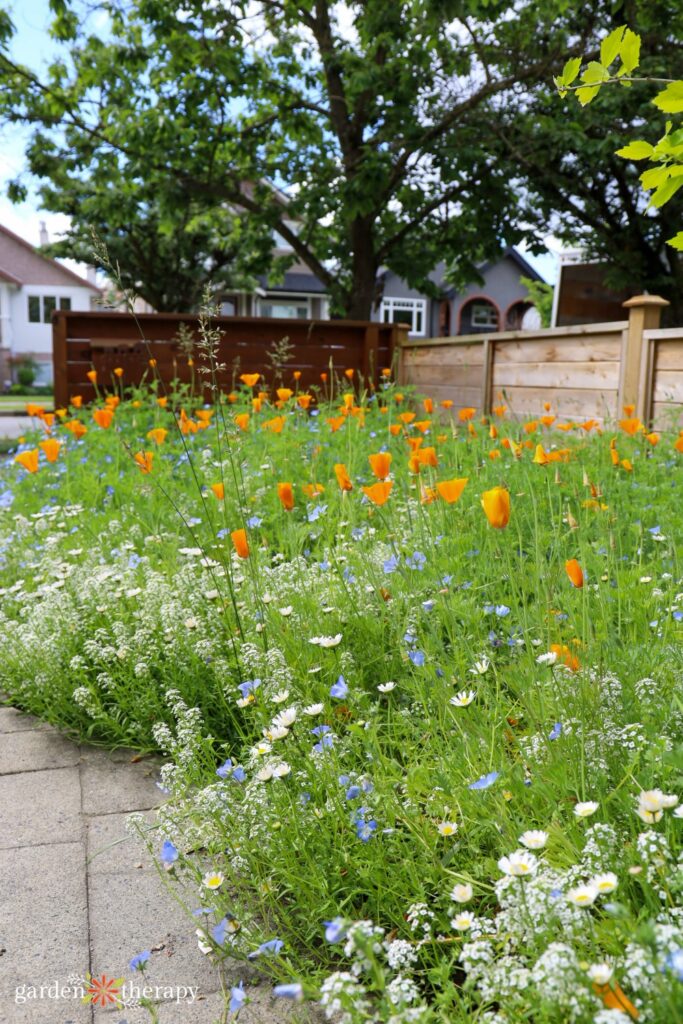

What is a Dry River?
Dry rivers are an ornamental solution to drainage problems in the garden. They create a water catchment space where water from your home can filter back into the soil. The surrounding plants can then reach down with their deeper roots and hydrate. It’s a win-win!
Dry river beds are made with river stones and mimic the look of a wild river. The result is a very natural-looking rock element in your garden. It can blend in or become a feature in itself, being both aesthetic and functional.
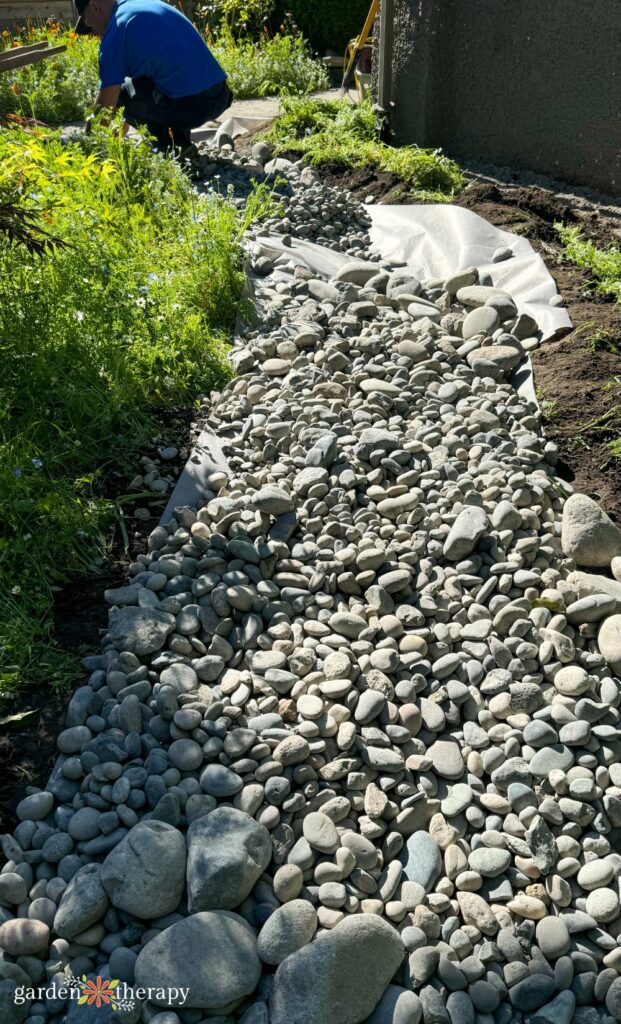

Picking a Location for Your Dry River Bed
When I first moved into my house, it was evident that the front yard had a drainage problem. It was muddy and puddly and neglected.
I was initially inspired to put in a dry river because of the way the eavestroughs were designed. The gutters that collect off the roof were a little broken and poorly maintained and drained directly into the soil or went into underground pipes that took the water away from the house.
The yard, as a result has a very high water table. This means that in the summer drought months, the plants do quite well because they get enough supplemental water. I haven’t had to provide ANY supplemental water for my wildflower lawn so far.
But it also holds lots of water when things are cooler, and anything that doesn’t like wet feet won’t do well. The grass didn’t do well at all prior to the wildflower lawn, as it was just too damp in the winter months.
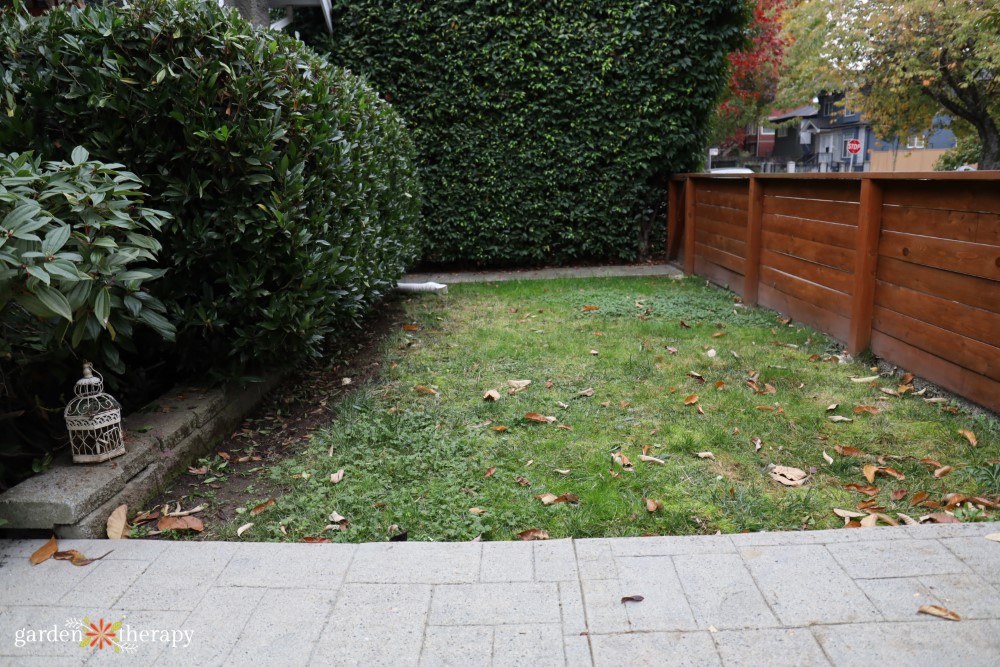



Some of the water is redirected into the city runoff and then piped out to the ocean. This isn’t ideal, either. It doesn’t allow any of the rain that would naturally fall there to return to the soil. We should use the existing water on the land to support the plants.
This left me in a tricky spot, as I didn’t want to put any kind of drainage too close to the house—this can be problematic and cause rot on the house’s frame.
So I redirected the water back into the land, where it could be properly and efficiently drained. I moved the water to go into about the middle of the lawn where it would be away from the house but still feed the surrounding plants.
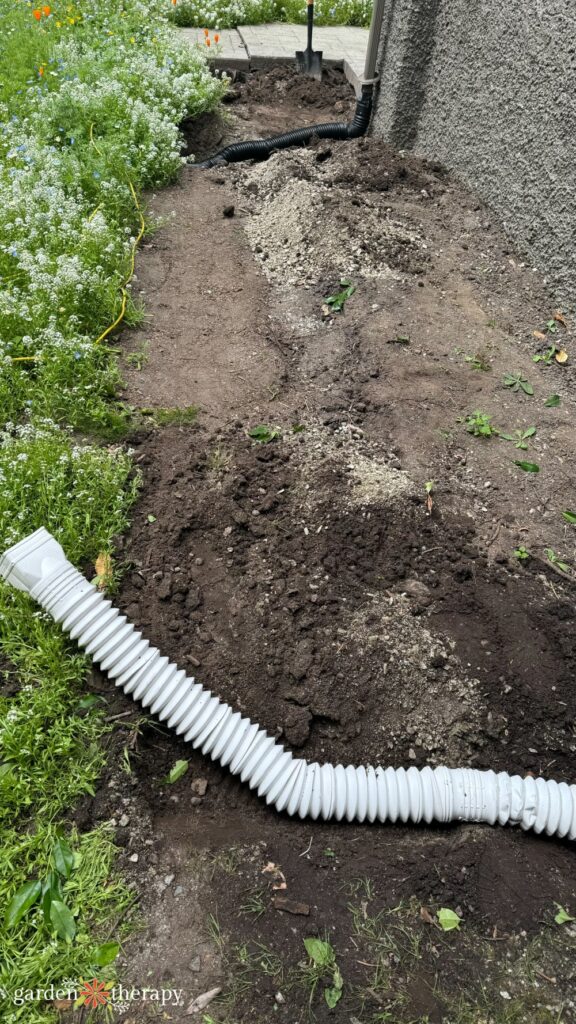

How to Make a Dry River Bed for Drainage
The first thing I did was redirect the eavestroughs to the middle of the wildflower lawn. This did mean I had to do some digging up, so more on that later!
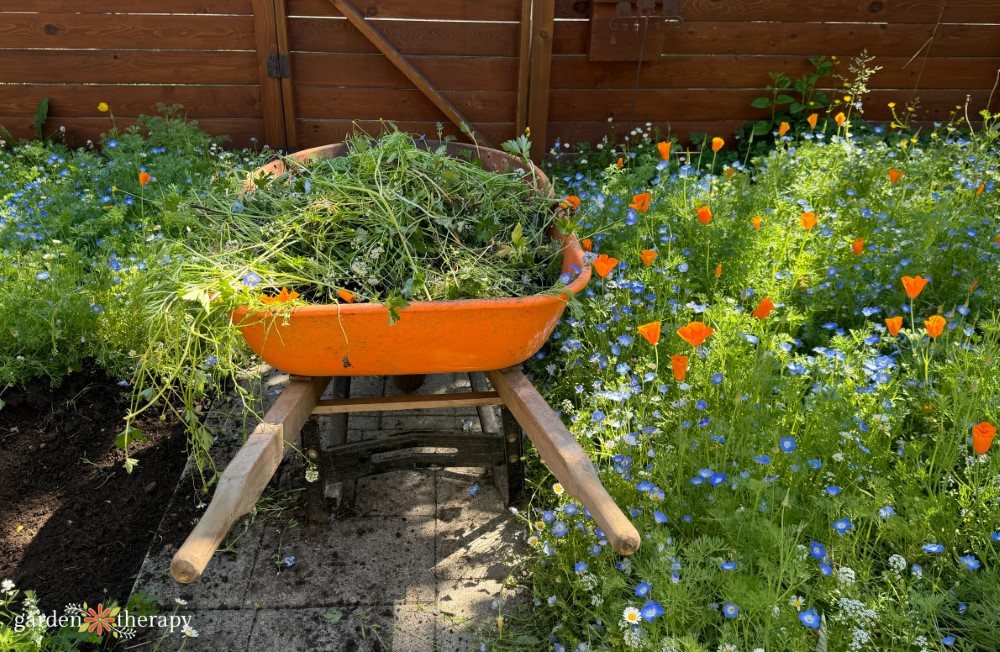

I chose a general shape for my dry river, giving it curves and a naturalistic shape to weave through my lawn as a pathway, digging the flowers out as I went.
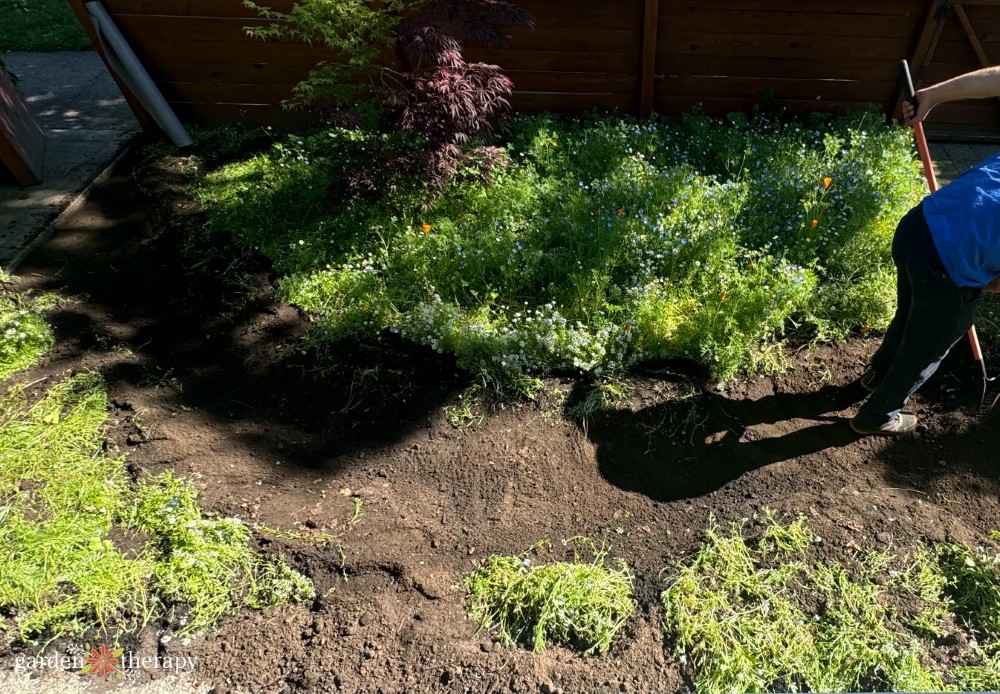

I then put a layer of landscape fabric over top of the curve I created. Depending on how much water and drainage you need, you can dig deeper and add a base layer of gravel to help hold onto excess rainwater. See an example of that kind of dry river bed in this post.
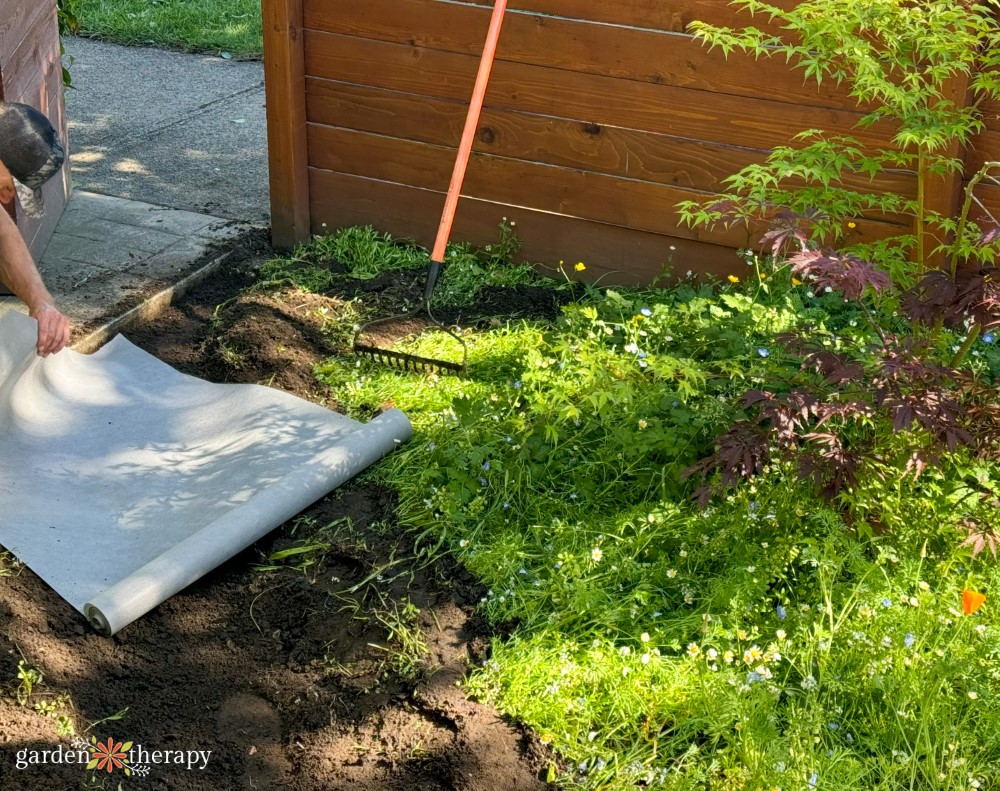

For me, I just topped off my landscape fabric with river stones in two different sizes. I have smaller ones that are about 1-2 inches, and then larger stones that are 2-4 inches. So far, it’s been all I need!
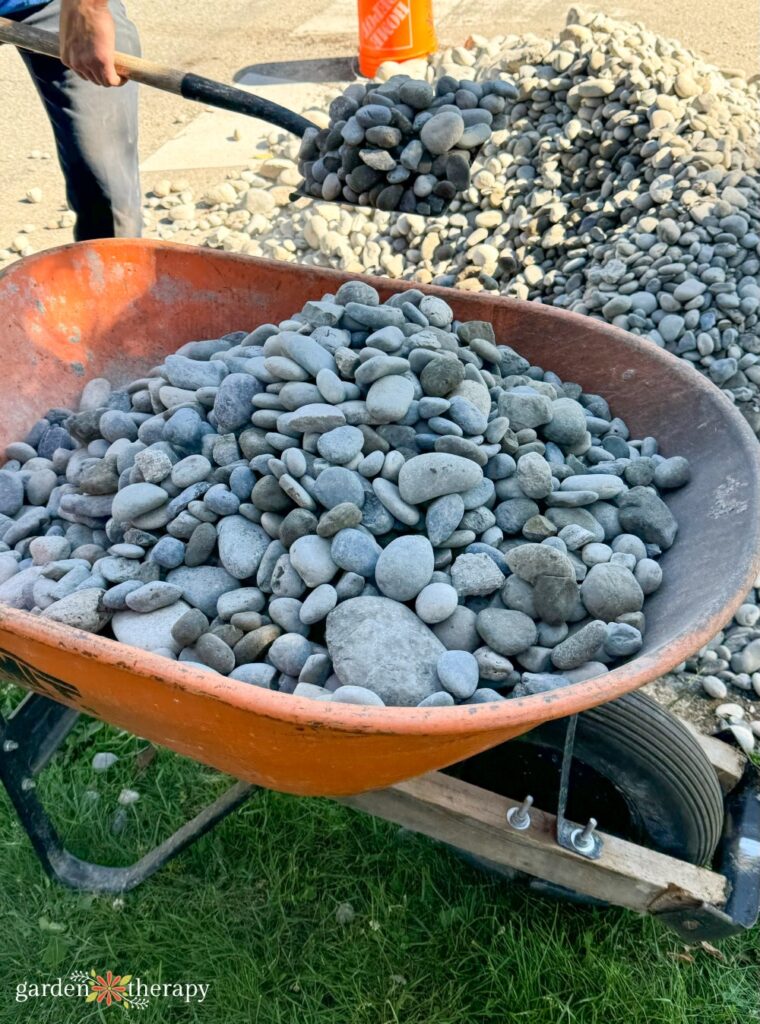

I then had Kiddo reorganize the rocks. He wanted to organize them so that the larger ones were on the outside and the smaller ones were on the inside. We didn’t use any kind of edging.
Kiddo feels a lot of pride doing work in the garden, and he talks about the dry river all the time. I love seeing him become attached to the garden.


Maintaining Your Dry River
So far, the only maintenance I’ve done to my front yard is to take grass shears and cut back the flowers along the edge of the dry river bed.
While I wanted a walking path, it is a little bit unstable to walk on. For someone like me with a disability, having a riverstone walkway can be a bit of a challenge. Twisted ankles are definitely a concern.
But for my family, it’s not supposed to be a major walking path. There will be no wheelbarrows or people walking it daily. It’s just for the animals and our family to use when they need to traverse across the wildflowers.
I may adjust it in the future, but for now, I’m content. What you can also do is add natural paver stones to the center to make it look more like a walkway.
Your dry river shouldn’t need much maintenance, but make any necessary adjustments as you go. It won’t be immediately evident how the drainage will work until it rains!


Landscaping Your Dry River Bed
When I removed the wildflowers, I tried to keep them and transplant them. While the sweet alyssum transplanted well, most of the other flowers didn’t.
On one side of the dry river towards the house, I ended up digging out any remaining wildflowers and turning that space into a drought tolerant herb garden. So far, I have lavender, sage, rosemary, and some yarrow.
These drought tolerant plants will not need supplemental water in the summer, but the dry river will also help keep moisture in the ground where the deep roots of the perennials can reach them.
And the plants look beautiful as well!
Dry rivers are very similar to rain gardens and have many of the same principles. You can find more landscaping and plant ideas for your dry river in this rain gardens post.
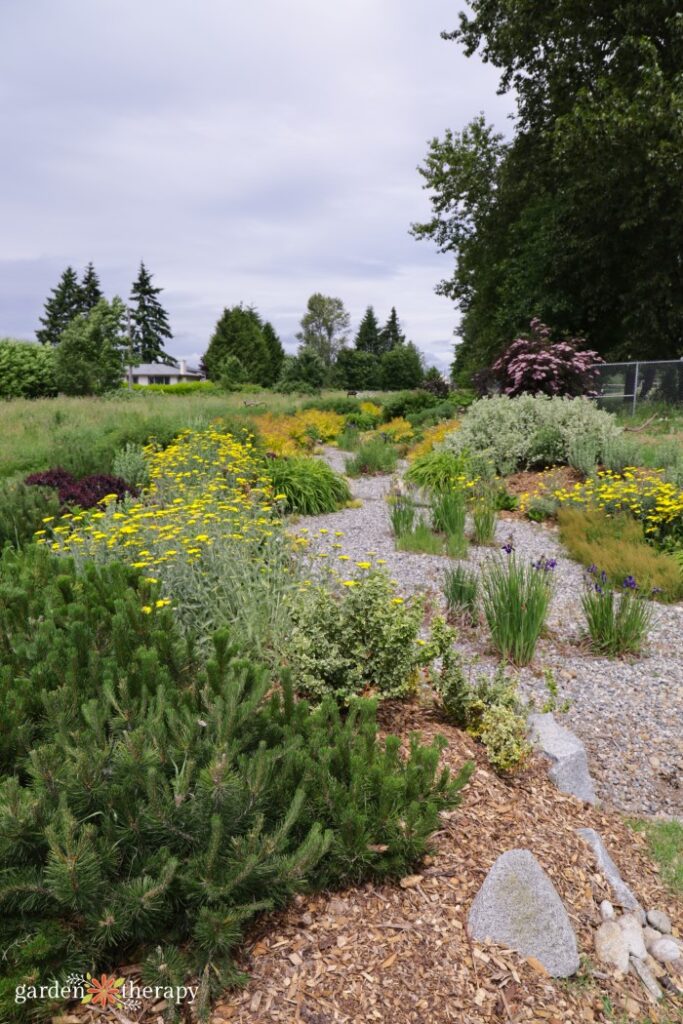

More Ways to Design a Drought-Friendly Garden


